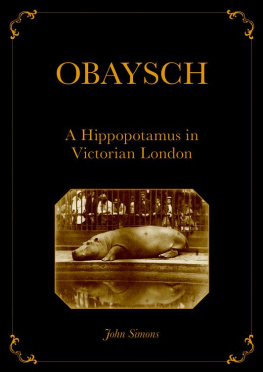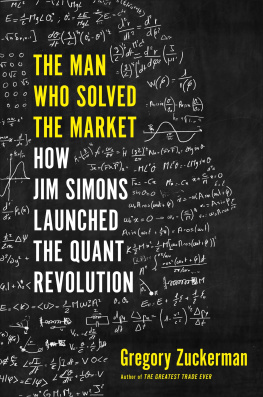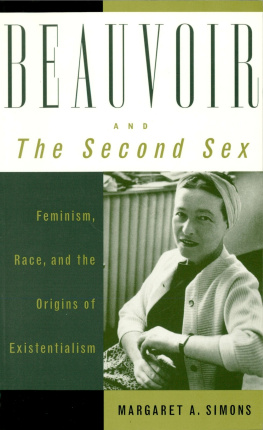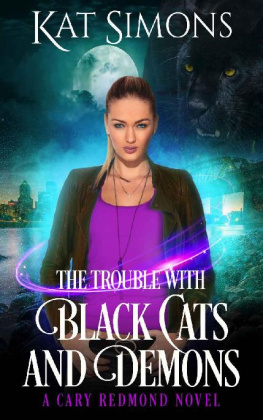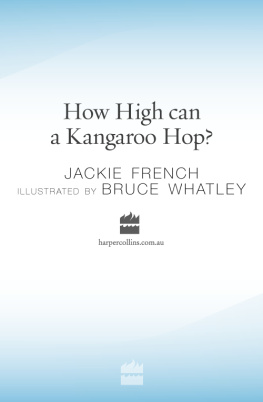Kangaroo

Animal
Series editor: Jonathan Burt
Already published
Ant Charlotte Sleigh Ape John Sorenson Bear Robert E. Bieder
Bee Claire Preston Camel Robert Irwin Cat Katharine M. Rogers
Chicken Annie Potts Cockroach Marion Copeland Cow Hannah Velten
Crow Boria Sax Dog Susan McHugh Donkey Jill Bough
Duck Victoria de Rijke Eel Richard Schweid Elephant Daniel Wylie
Falcon Helen Macdonald Fly Steven Connor Fox Martin Wallen
Frog Charlotte Sleigh Giraffe Mark Williams Hare Simon Carnell
Horse Elaine Walker Hyena Mikita Brottman Kangaroo John Simons
Lion Deirdre Jackson Lobster Richard J. King Moose Kevin Jackson
Mosquito Richard Jones Otter Daniel Allen Owl Desmond Morris
Oyster Rebecca Stott Parrot Paul Carter Peacock Christine E. Jackson
Penguin Stephen Martin Pig Brett Mizelle Pigeon Barbara Allen
Rat Jonathan Burt Rhinoceros Kelly Enright Salmon Peter Coates
Shark Dean Crawford Snail Peter Williams Snake Drake Stutesman
Sparrow Kim Todd Spider Katja and Sergiusz Michalski Swan Peter Young
Tiger Susie Green Tortoise Peter Young Trout James Owen
Vulture Thom Van Dooren Whale Joe Roman Wolf Garry Marvin
Kangaroo
John Simons
REAKTION BOOKS | 
|
Published by
REAKTION BOOKS LTD
33 Great Sutton Street
London EC1V 0DX, UK
www.reaktionbooks.co.uk
First published 2013
Copyright John Simons 2013
All rights reserved
No part of this publication may be reproduced, stored in a retrieval system or transmitted, in any form or by any means, electronic, mechanical, photocopying, recording or otherwise without the prior permission of the publishers.
Page references in the Photo Acknowledgements and
Index match the printed edition of this book.
Printed and bound in China
British Library Cataloguing in Publication Data
Simons, John, 1955
Kangaroo. (Animal)
1. Kangaroos. 2. Kangaroos Symbolic aspects.
3. Kangaroo hunting Moral and ethical aspects Australia.
I. Title II. Series
599.222-DC23
eISBN: 9781861899446
Contents
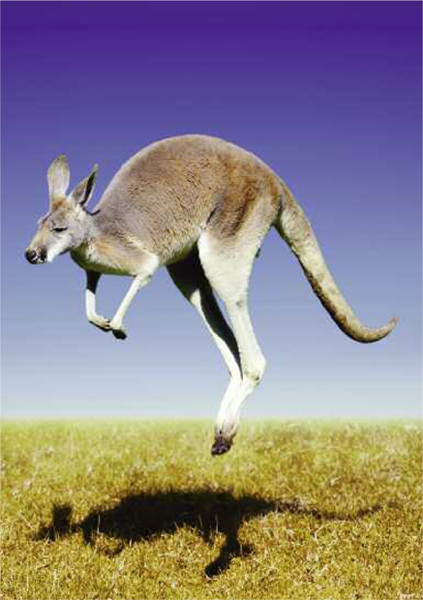
What is a Kangaroo?
Every non-human animal bears a burden placed on it by humans. For some, like camels, donkeys and horses, the burden is a literal one. For others, like spiders, snakes and crocodiles, it is one of fearfulness and, often, ignorance. For most, the burden is symbolic. The burden the kangaroo carries is that of strangeness. Perhaps no other animal has summed up the sense of otherness in the Western imagination as strongly as the kangaroo did when Australia was colonized. In 1862 the American poet Emily Dickinson invoked this association when she wrote a flirtatious and even suggestive letter to Thomas Higginson, an editor of the Atlantic Monthly, in which she refers to Myself the only Kangaroo among the Beauty.
This burden of strangeness continues today. When the writers of the 2009 popular television series FlashForward which depicts a world in which the entire human race has suffered a 30-second loss of consciousness during which each person appears to have seen a piece of the future wanted to find an image to demonstrate that the world really had been turned upside down, they showed a kangaroo insouciantly hopping down a city street strewn with the wreckage of crashed cars and enveloped in the smoke of burning aeroplanes. For them the kangaroo was not only an animal out of place in the catastrophic aftermath of the mass blackout but also the signifier of the change in the world order that the blackout might entail.
Yet for all their strangeness and for all this symbolic work that they do on our behalf kangaroos are not, like pandas or white tigers, rare. They are by no means confined to the island continent of Australia and their image is almost universally familiar. But although they are common and familiar, the strangeness they carry has meant that they are relatively unknown animals and, even in Australia, they are not well understood. Much of this book will concern itself with looking at the ways in which images of kangaroos are symbolically charged. But it will start with a review of the remarkable zoological features of the kangaroo, of its biological uniqueness and its amazingly adaptable life cycle. Perhaps if this aspect of the kangaroo were better understood, the burden of strangeness it bears might be justified beyond the mere fact of its novelty to non-Indigenous Australians and visitors to zoos and wildlife parks across the globe.
The genus Macropus, to which the kangaroo belongs, is highly differentiated and there are currently 65 known species. I say known species very deliberately, since Australia and its neighbouring islands have a habit of delivering cryptozoological surprises. As recently as 1975 an entirely new species of kangaroo was found living within a short drive of the city of Melbourne. And in 1994 Professor Tim Flannery, now of Macquarie University and one of the most respected (and entertaining) authorities on kangaroos in the world, identified and described yet another new species, the dingiso (Dendrolagus mbaiso a tree-kangaroo), in the forests of the Indonesian province of Papua. Kangaroos are related to two other families, the Hypsiprymnodontidae (represented only by a curious little creature, the musky rat-kangaroo, that lives in North Queensland) and the Potoroidae (potoroos, bettongs and two rat-kangaroos). Within the Macropodidae family we find kangaroos, tree-kangaroos, various types of wallaby, quokkas, oolacuntas, monjons, warabis, tammars, wallaroos, euros and pademelons. But what most people mean when they say kangaroo and what, I think, they imagine, are the four large species: the red kangaroo (Macropus rufus), the eastern grey kangaroo (Macropus giganteus), the western grey kangaroo (Macropus fuliginosus) and the antilopine kangaroo (Macropus antilopinus). The red kangaroo (which is the biggest, growing up to 2 metres in height) lives in the centre of the continent; the eastern and western greys live in the more fertile areas in the east and west of the continent respectively; and the antilopine kangaroo has a range in similar areas of the far north.
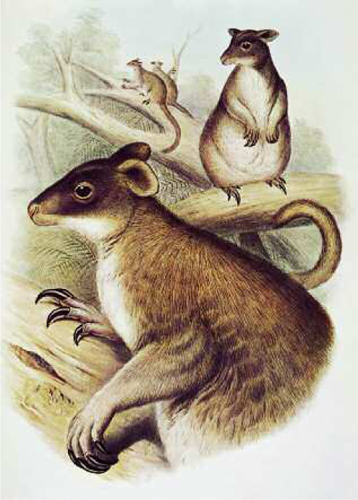
| The grizzled tree-kangaroo (Dendro lagus inustus), from John Gould, The Mammals of Australia (1863). |
The eastern (formerly great) grey kangaroo (Macropus giganteus, ex M. major), from Gould, The Mammals of Australia (1863). | 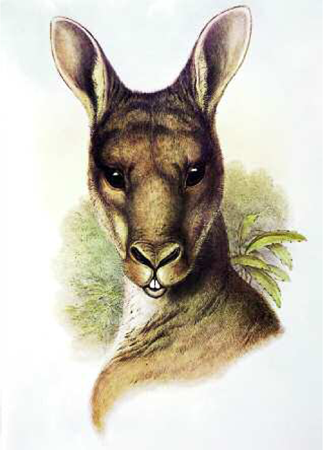
|





